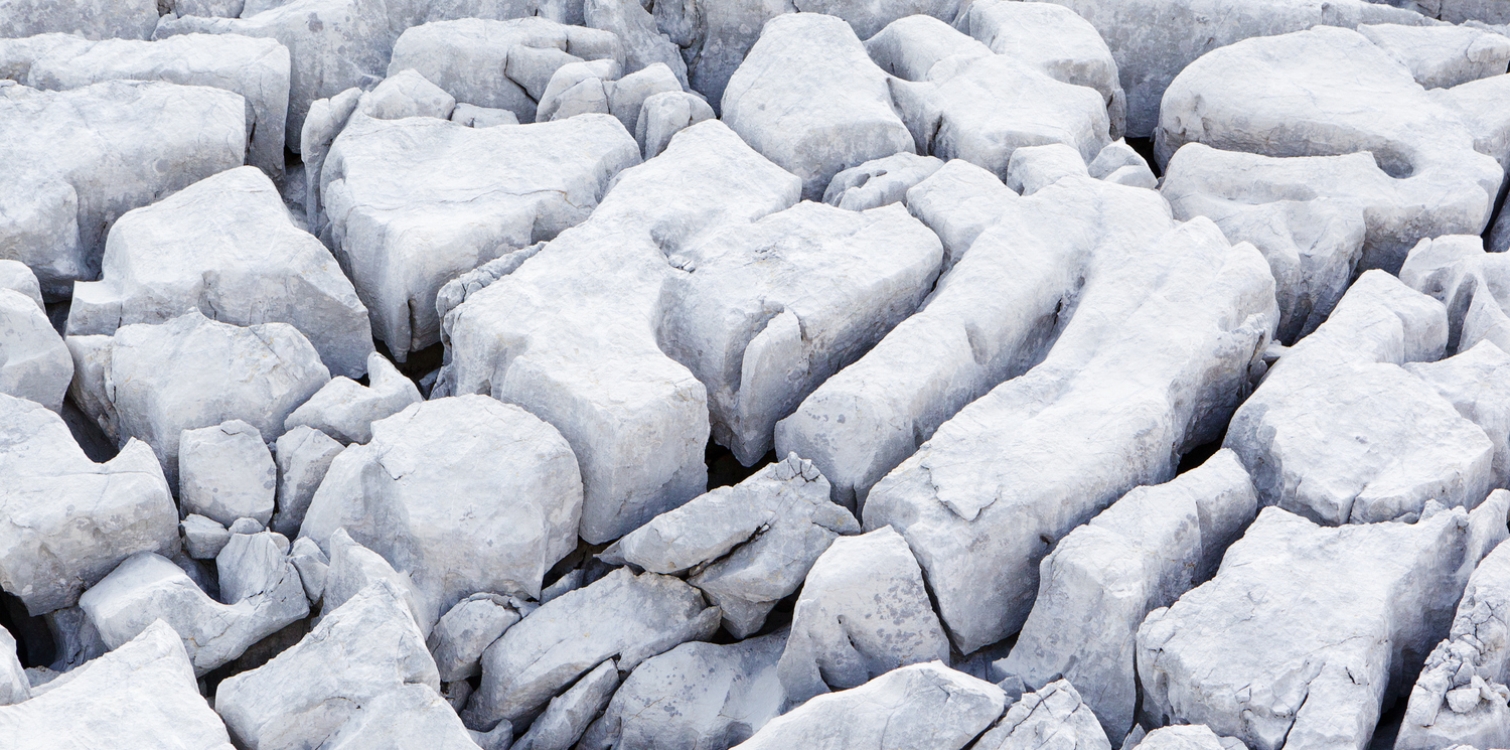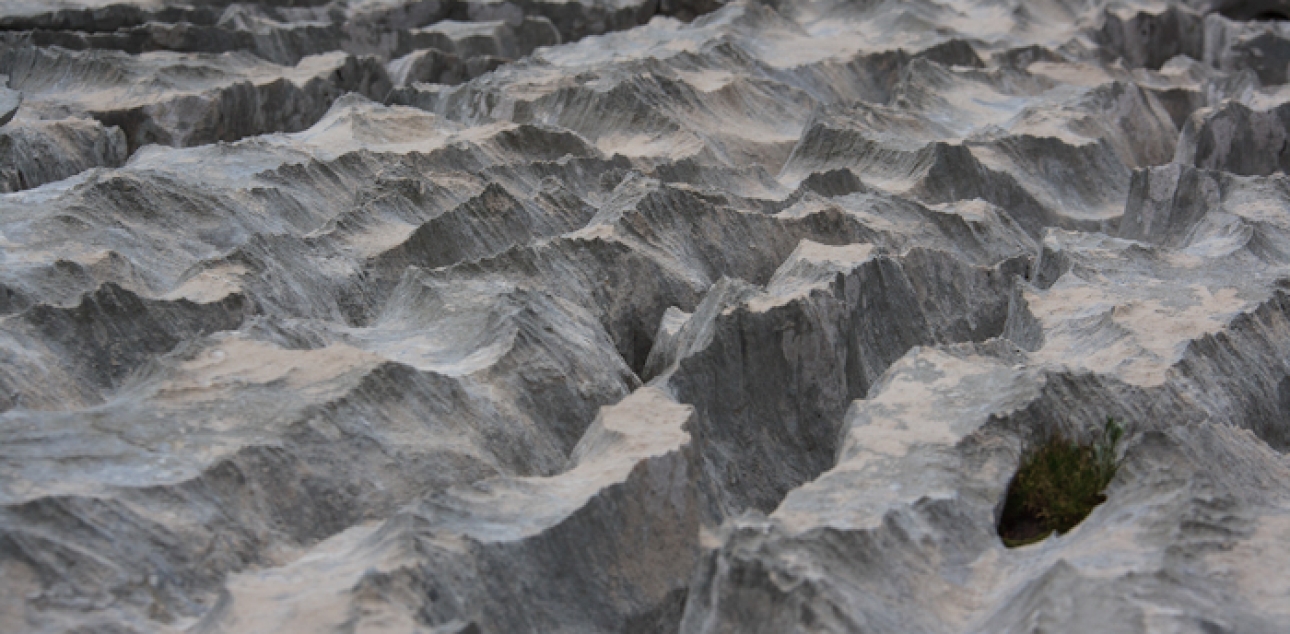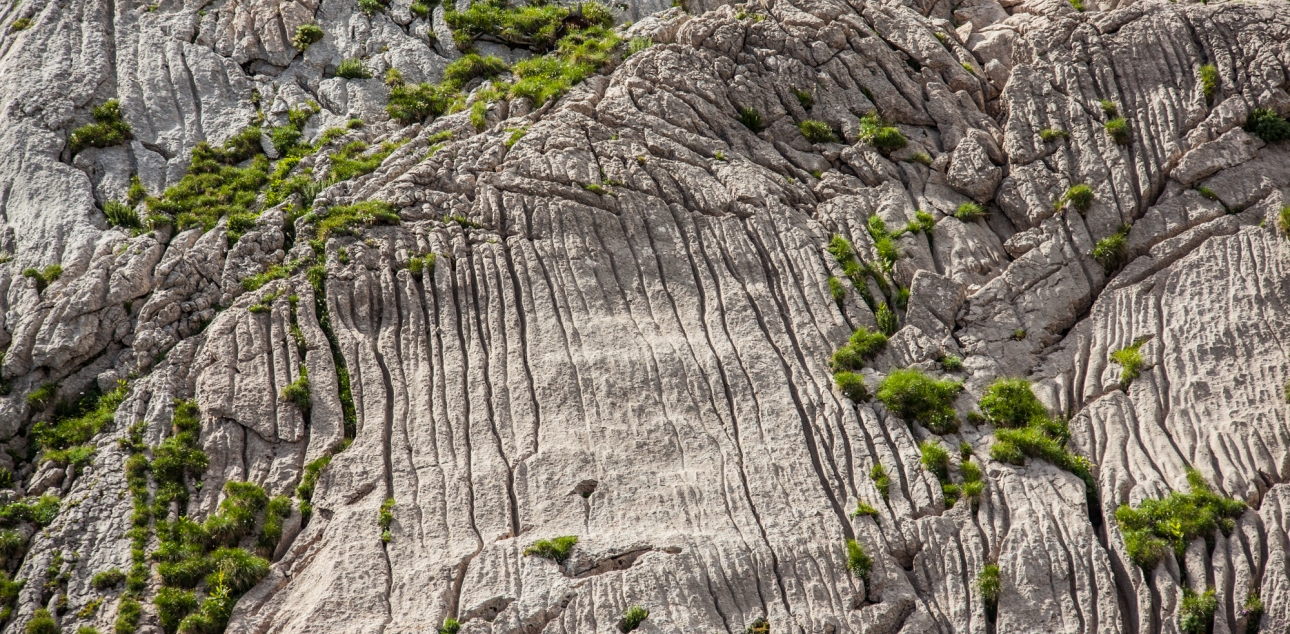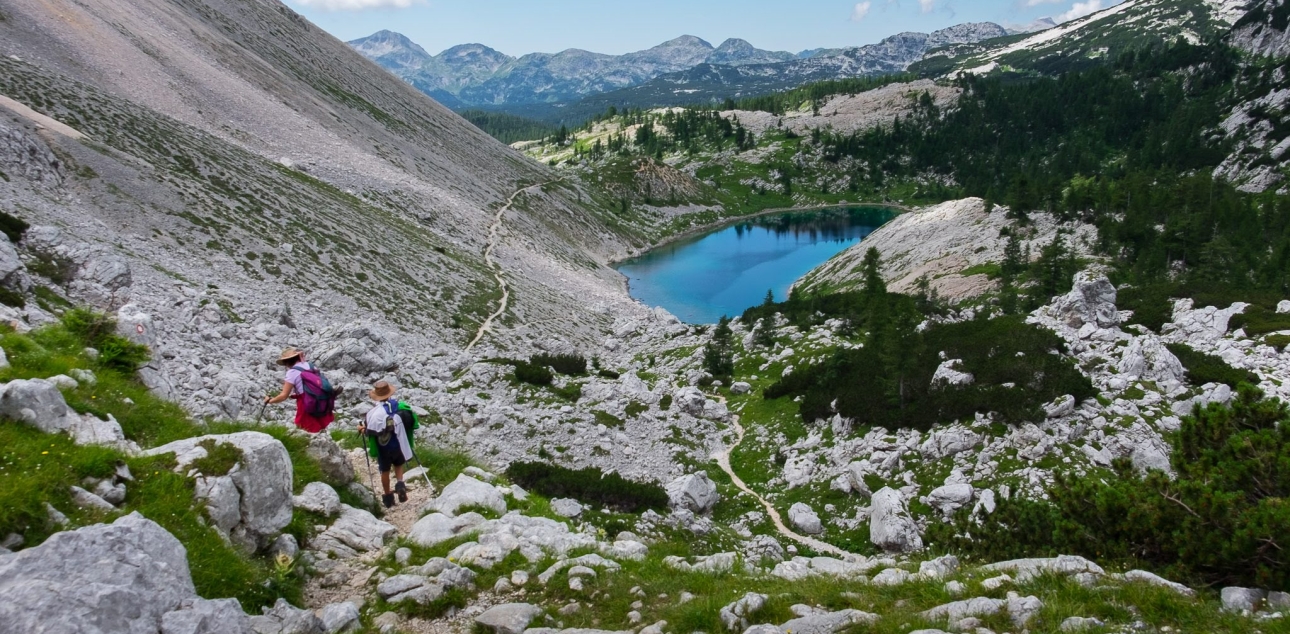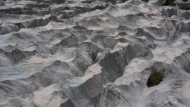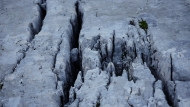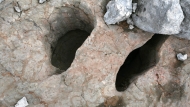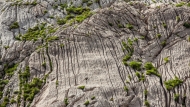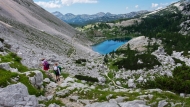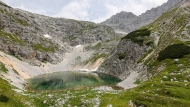The Julian Alps have a limestone surface and underground. The surface has been glacially transformed by the action of glaciers. The Julian Alps are characterised by a mountainous climate with plenty of precipitation, especially snow. Rainwater in the form of rain, snow and ice dissolves limestone in the mountains under different conditions.
The alpine karst is characterised by vertical caves that can be very deep. On the surface, the dissolution of the limestone bedrock results in the formation of kontas, "kotliči", karren, grike, solution pan and limestone pavements.
- The largest are the kontas. These are the larger sinkholes where the snow stays the longest.
- The "kotliči" are smaller than the kontas, are usually deeper and have steep or vertical walls.
- Karren are formed on smooth, usually exposed limestones. Rainwater collects from the droplets into a common flow, creating narrow and shallow gutter-like erosions on the surface.
- The grikes are narrower and deeper than the karrens and are usually formed along fractures in the rock.
- Solution pans are pan-like depressions in limestone rock. They have a characteristic flat bottom and hollowed out edges. They are formed where water cannot drain freely and therefore accumulates and begins to dissolve the rock through corrosion.
- The limestone pavements are smooth rock surfaces.
On such terrains, karst features are even more visible and pronounced. In the dry periods of the year, alpine karst, although shaped by water, is essentially a desert without a drop of water, as it quickly seeps into the underground labyrinth through systems of cracks.
DID YOU KNOW?
- The lowest temperature in Slovenia was measured in a sinkhole in Komna, at -49.1°C.
- The deepest vertical cave in Slovenia is the Čehi 2 pothole on the Rombonski podi on Kanin. It is 1370 m deep.
Thank you.

